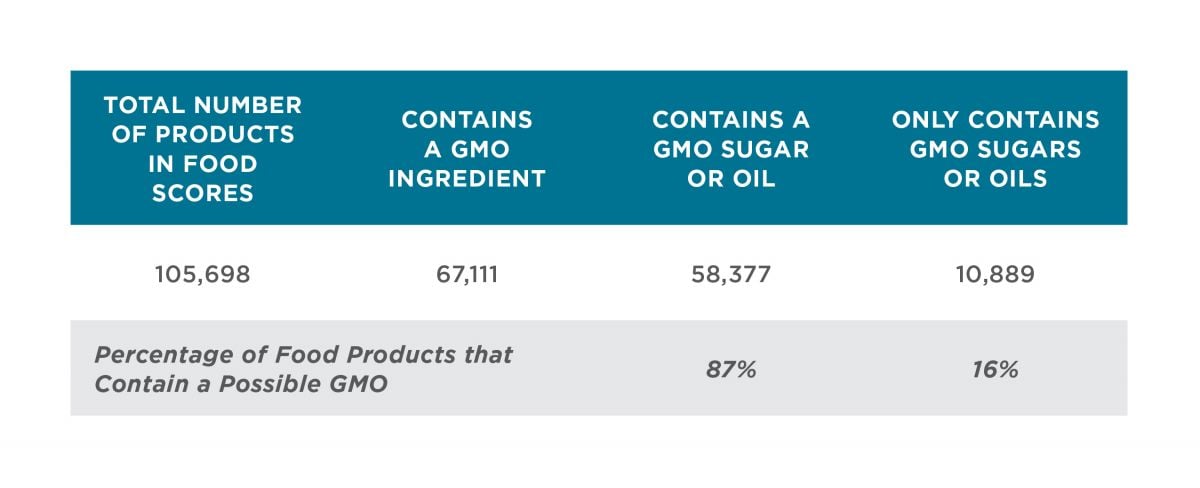EWG Analysis: Loophole Could Exempt Over 10,000 GMO Foods from Disclosure Law

Originally published in EWG’s AgMag blog by Colin O’Neil, Legislative Director, and Sean Perrone-Gray, Director of Consumer Database Architecture
Loopholes proposed by the Trump administration could exempt over 10,000 – or one out of six – genetically modified foods from a new GMO disclosure law, according to an EWG analysis.
The draft rule may exempt foods produced with GMOs if the food products contain highly refined GMO sugars and oils.
There is a high rate of adoption for many GMO crops like corn, soybeans, canola and sugar beets, meaning that ingredients derived from these crops have a high likelihood of being GMO. Based on an analysis of ingredient-level information for more than 105,000 food products in our Food Scores database, EWG estimated that roughly 67,111 food products contain at least one of these ingredients, which are likely produced with genetic engineering.
Out of that total, as many as 58,377 food products – or 87 percent – contain a highly refined sugar or oil that is likely produced with genetic engineering, like beet sugar or canola oil. And 10,889 – or one in six – possible GMO food products only contain a highly refined sugar or oil that is likely produced with genetic engineering and would therefore be exempt from the disclosure requirement.
 But another loophole in the Trump administration’s proposal would exempt products from the disclosure requirement when the GMO ingredients make up less than 5 percent of the product by weight.If the product contains another GMO ingredient, it would still be subject to the new GMO disclosure requirement, which was created by Congress in 2016.
But another loophole in the Trump administration’s proposal would exempt products from the disclosure requirement when the GMO ingredients make up less than 5 percent of the product by weight.If the product contains another GMO ingredient, it would still be subject to the new GMO disclosure requirement, which was created by Congress in 2016.
Among the other possible GMO ingredients EWG identified that are not highly refined sugars and oils, are dozens of ingredients used as thickening agents, colorants, flavorings, emulsifiers and binders that are derived from highly adopted GMO crops like corn and soybeans.
And many of these ingredients often appear in low levels at the bottom of ingredient lists, meaning that in combination, the GMO ingredients in thousands of foods could fall below a 5 percent exemption.














































